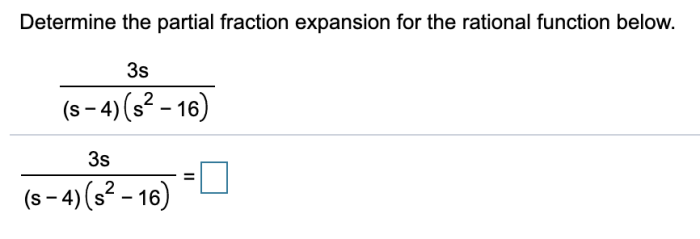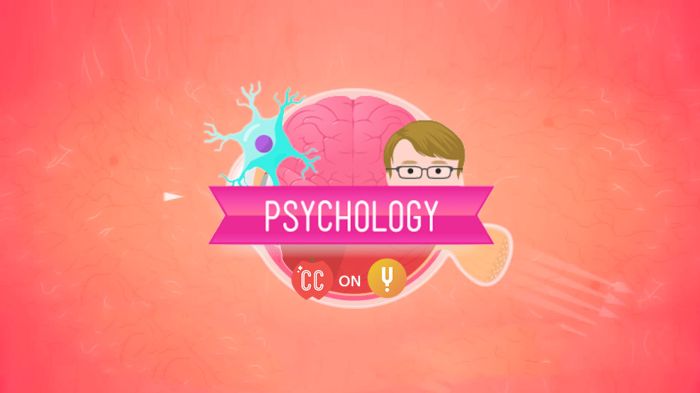Embark on a scientific odyssey with our DNA Genes and Chromosomes Worksheet, where the intricate tapestry of life’s building blocks unravels before your very eyes. This comprehensive guide delves into the depths of genetics, unveiling the secrets of DNA, genes, and chromosomes, their profound impact on heredity, and their implications for our understanding of biology.
Prepare to be captivated as we dissect the double-helix structure of DNA, decipher the genetic code within genes, and explore the dynamic world of chromosomes. Our journey will illuminate the processes of DNA replication and gene regulation, empowering you with a deeper comprehension of the mechanisms that govern life’s blueprint.
Introduction
Deoxyribonucleic acid (DNA), genes, and chromosomes are the fundamental building blocks of life. They carry the genetic information that determines the characteristics of every living organism.
DNA is a double helix molecule that contains the genetic code. Genes are segments of DNA that code for specific proteins. Chromosomes are structures that organize and package DNA within the cell.
The Role of DNA, Genes, and Chromosomes in Heredity and Genetic Inheritance
DNA, genes, and chromosomes play a critical role in heredity and genetic inheritance. When cells divide, they replicate their DNA, ensuring that each new cell receives a complete copy of the genetic material. Genes are passed from parents to offspring through the sex cells (sperm and eggs).
The combination of genes inherited from both parents determines the traits of the offspring.
The Importance of Understanding DNA, Genes, and Chromosomes in Biology
Understanding DNA, genes, and chromosomes is essential for biologists and geneticists. It allows them to study the genetic basis of diseases, develop new treatments, and gain insights into the evolution of life on Earth.
Structure of DNA
DNA, or deoxyribonucleic acid, is the molecule that contains the instructions for an organism’s development and characteristics. It is found in the nucleus of cells and is made up of two long strands of nucleotides twisted together in a double helix shape.
Components of DNA Nucleotides
Each nucleotide in DNA consists of three parts:
- A nitrogenous base: adenine (A), cytosine (C), guanine (G), or thymine (T).
- A deoxyribose sugar molecule.
- A phosphate group.
Base Pairing Rules
The two strands of DNA are held together by hydrogen bonds between the nitrogenous bases. These bases pair up in a specific way: adenine always pairs with thymine (A-T), and cytosine always pairs with guanine (C-G). This base pairing is essential for DNA replication and transcription.
Structure of Genes: Dna Genes And Chromosomes Worksheet
Genes are segments of DNA that code for specific traits. They are the fundamental units of heredity and determine the characteristics of an organism. Genes are composed of two types of regions: exons and introns.
Exons and Introns
Exons are the coding regions of a gene, containing the instructions for making proteins. Introns, on the other hand, are non-coding regions that do not directly contribute to the protein sequence. Introns are often removed during gene expression, a process that involves transcribing the gene into messenger RNA (mRNA) and then translating the mRNA into protein.
Gene Expression
Gene expression is the process by which the information in a gene is used to direct the synthesis of a protein. It involves several steps:
- Transcription:The DNA sequence of the gene is copied into a complementary strand of mRNA.
- Splicing:The mRNA undergoes splicing, where introns are removed and exons are joined together.
- Translation:The mRNA is translated into a chain of amino acids, forming the protein.
Gene expression is a complex and tightly regulated process that ensures that the right proteins are produced at the right time and in the right amounts.
Structure of Chromosomes
Chromosomes are the highly organized structures of DNA found in the nucleus of cells. They are made up of DNA, proteins, and other molecules and are responsible for carrying genetic information. Each chromosome consists of a single, long DNA molecule that is tightly coiled around proteins called histones.Chromosomes
are divided into two types: euchromatin and heterochromatin. Euchromatin is the less condensed form of chromatin and is where most genes are located. Heterochromatin is the more condensed form of chromatin and is found in regions of the chromosome that do not contain genes.Chromosomes
play a vital role in cell division. During cell division, the chromosomes are duplicated and then separated into two sets, one for each daughter cell. This ensures that each daughter cell receives a complete set of genetic information.
Role of Chromosomes in Cell Division
During cell division, the chromosomes are duplicated and then separated into two sets, one for each daughter cell. This ensures that each daughter cell receives a complete set of genetic information.The process of chromosome duplication is called DNA replication. DNA replication begins at specific locations on the chromosome called origins of replication.
Once DNA replication is complete, the two copies of each chromosome are called sister chromatids.The sister chromatids are then separated from each other during a process called anaphase. Anaphase is one of the stages of mitosis, the type of cell division that occurs in most cells.Once
the sister chromatids are separated, they move to opposite ends of the cell. This results in each daughter cell receiving a complete set of chromosomes.
DNA Replication
DNA replication is a fundamental process that ensures the accurate transmission of genetic information during cell division. It involves the precise duplication of the DNA molecule, resulting in two identical daughter molecules. This process is crucial for the growth, development, and reproduction of all living organisms.
Enzymes in DNA Replication
The DNA replication process relies on a complex machinery of enzymes, each playing a specific role in the duplication of the DNA molecule. The key enzyme involved is DNA polymerase, which is responsible for synthesizing new DNA strands complementary to the template strands.
- DNA polymerase: This enzyme catalyzes the addition of nucleotides to the growing DNA strand, ensuring the accurate incorporation of bases according to the base-pairing rules (A-T, C-G).
- Helicase: This enzyme unwinds the double helix structure of DNA, separating the two strands to provide a template for replication.
- Primase: This enzyme synthesizes short RNA primers, which are complementary to the template strand and provide a starting point for DNA polymerase.
- Ligase: This enzyme joins the newly synthesized DNA fragments, forming a continuous daughter strand.
Importance of DNA Replication
DNA replication is essential for cell division and growth. During cell division, each daughter cell must receive a complete and accurate copy of the genetic material to ensure proper development and functioning. DNA replication also plays a vital role in growth, as new cells are constantly being produced to replace old or damaged ones.
Gene Regulation
Gene regulation refers to the intricate processes that control the expression of genes within an organism. It plays a pivotal role in determining which genes are active and to what extent, ensuring the proper development, functioning, and adaptation of an organism.Gene
regulation involves a complex interplay of mechanisms that occur at various stages of gene expression. These mechanisms include transcription factors, epigenetic modifications, and post-transcriptional and post-translational modifications. Transcription factors are proteins that bind to specific DNA sequences, either promoting or inhibiting the transcription of genes.
Epigenetic modifications, such as DNA methylation and histone modifications, can alter the accessibility of DNA to transcription factors, influencing gene expression without changing the underlying DNA sequence.
Transcription Factors
Transcription factors are crucial for regulating gene expression by binding to specific DNA sequences known as promoter regions. These regions are located near the start of genes and play a critical role in initiating transcription. Transcription factors can act as either activators or repressors, depending on their structure and the DNA sequence they bind to.
Activators promote the binding of RNA polymerase, the enzyme responsible for transcribing DNA into RNA, to the promoter region. Repressors, on the other hand, inhibit the binding of RNA polymerase, preventing transcription.
Epigenetic Modifications
Epigenetic modifications are chemical changes to DNA or histones that can alter gene expression without modifying the underlying DNA sequence. These modifications include DNA methylation and histone modifications. DNA methylation involves the addition of a methyl group to specific DNA bases, often resulting in gene silencing.
Histone modifications involve the addition or removal of chemical groups to histones, proteins that DNA wraps around to form chromatin. These modifications can alter the structure of chromatin, making it either more or less accessible to transcription factors and RNA polymerase.
Genetic Disorders
Genetic disorders are conditions that arise from changes in the DNA sequence of an individual. These changes can range from small variations to large-scale chromosomal abnormalities and can have a significant impact on the health and well-being of an individual.
Genetic disorders can be caused by a variety of factors, including:
- Mutations:Mutations are changes in the DNA sequence that can occur spontaneously or be inherited from parents.
- Chromosomal abnormalities:Chromosomal abnormalities are changes in the structure or number of chromosomes. These can occur during cell division and can result in conditions such as Down syndrome and Turner syndrome.
- Environmental factors:Environmental factors such as exposure to radiation or certain chemicals can also contribute to the development of genetic disorders.
Common Types of Genetic Disorders
There are many different types of genetic disorders, each with its own unique symptoms and characteristics. Some of the most common types of genetic disorders include:
- Sickle cell anemia:Sickle cell anemia is a blood disorder that is caused by a mutation in the gene that codes for the beta-globin protein. This mutation results in the production of abnormal hemoglobin molecules that can cause red blood cells to become sickle-shaped.
- Cystic fibrosis:Cystic fibrosis is a genetic disorder that affects the lungs, pancreas, and other organs. It is caused by a mutation in the gene that codes for the cystic fibrosis transmembrane conductance regulator (CFTR) protein. This mutation results in the production of a defective CFTR protein that impairs the transport of chloride ions across cell membranes.
Role of Genetic Testing in Diagnosing and Treating Genetic Disorders, Dna genes and chromosomes worksheet
Genetic testing can play a crucial role in diagnosing and treating genetic disorders. By analyzing an individual’s DNA, genetic testing can identify mutations or chromosomal abnormalities that may be responsible for a genetic disorder. This information can help to confirm a diagnosis, assess the risk of developing a genetic disorder, and guide treatment decisions.
In some cases, genetic testing can also be used to identify individuals who are carriers of a genetic disorder. Carriers do not have symptoms of the disorder but can pass the mutated gene on to their children. Knowing that they are a carrier can help individuals make informed decisions about family planning and reproductive options.
Applications of DNA Technology
DNA technology has revolutionized various fields, leading to advancements in healthcare, forensics, and biotechnology. Its applications include DNA fingerprinting, genetic engineering, and gene therapy, each with its unique benefits and ethical implications.
DNA Fingerprinting
DNA fingerprinting, also known as genetic fingerprinting, is a technique used to identify individuals based on their unique DNA profile. It involves analyzing specific regions of an individual’s DNA and comparing them with those of others. DNA fingerprinting has become a powerful tool in forensic investigations, paternity testing, and establishing family relationships.
Genetic Engineering
Genetic engineering involves manipulating the genetic material of organisms to alter their traits or introduce new characteristics. It has applications in agriculture, where scientists can create genetically modified crops with improved yield, resistance to pests, and nutritional value. In medicine, genetic engineering holds promise for developing personalized treatments and cures for genetic disorders.
Gene Therapy
Gene therapy aims to treat or prevent genetic disorders by introducing functional genes into the cells of patients. It involves modifying the patient’s own cells or using donor cells to deliver the therapeutic genes. Gene therapy has the potential to provide cures for diseases that were previously untreatable, such as sickle cell anemia and cystic fibrosis.
Questions and Answers
What is the difference between DNA, genes, and chromosomes?
DNA is the genetic material found in cells, genes are segments of DNA that code for specific traits, and chromosomes are organized structures of DNA that carry genes.
How do genes determine our traits?
Genes contain instructions for making proteins, which are the building blocks of our bodies. Different genes code for different proteins, which in turn determine our physical and biochemical characteristics.
What is the role of chromosomes in cell division?
Chromosomes ensure that each new cell receives a complete set of genetic material during cell division.







